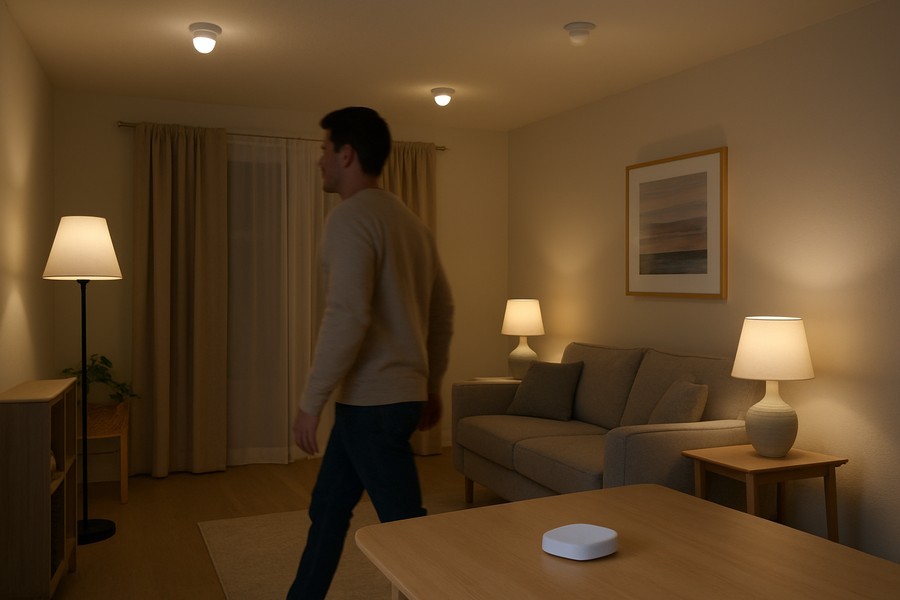
New Feature in Smart Light Bulbs: Built-in Motion Sensors
A recent announcement reveals an exciting new upgrade to smart light bulbs. Now, both new and older models are getting a feature that allows them to sense motion. The new capability, known as MotionAware, uses radio-frequency (RF) sensing to detect changes in the signal between bulbs, thus enabling them to respond to movement without the need for standalone motion sensors.
What MotionAware Brings to the Table
This significant update introduces an advanced functionality to existing hardware without any additional cost. However, to activate this feature, a new Bridge Pro device is needed. The manufacturer assures that the MotionAware feature will work with all of their mains-powered bulbs and fixtures manufactured after 2014, which makes up around 95 percent of the installed base.
How MotionAware Works
Establishing a MotionAware motion-sensing zone requires the new Bridge Pro and at least three devices in a room. It is compatible with all new and most existing mains-powered products via a firmware update. This includes smart bulbs, light strips, and fixtures. Unfortunately, portable devices and battery-powered accessories do not support this feature.
Setting up the feature involves selecting a room in the app, choosing the participating lights, and then motion can be detected in and around the area between those lights. Ideally, the lights should form a large zone. You can only set up four MotionAware zones per bridge. These zones then act as motion sensors in the app and can trigger automations for any lights or accessories (not just those in the Zone).
MotionAware: A Game-Changer for Smart Homes
"All of the functionality you get with our physical motion sensors — including turning on when motion is detected or off when there's been no movement for a certain amount of time — can be configured on motion-aware motion events," says the company CTO and founder.
The MotionAware feature doesn't just sense the presence of something; it requires movement. It can be triggered by pets or other forms of motion. Its sensitivity can be adjusted using a slider in the app. A key advantage over traditional motion sensors is that a MotionAware zone can cover a larger area and is not restricted to line of sight. However, it cannot sense light levels.
Greater Possibilities with MotionAware
Besides controlling lighting, MotionAware can also integrate with the company's DIY security platform, which includes cameras, contact sensors, and a new video doorbell. If it detects movement, it can trigger lights to flash red, activate a plug-in chime/siren, and send an alert to your phone with a button to call emergency services.
The lighting automation is free, but security notifications require a subscription plan. If you don't have cameras, you can just enable MotionAware security alerts for a small monthly fee.
The Science Behind MotionAware
MotionAware is based on RF sensing — a tech that uses wireless signals to "see" a space and detect disruptions within it. The data is then sent to the Bridge Pro, where AI algorithms decipher what is causing those disruptions, so the system can act accordingly.
Wi-Fi RF sensing has been around for a while. However, the company is the first to use Zigbee for RF sensing. The closed Zigbee mesh network allows for lower false detection rates compared to Wi-Fi.
Creating a Smarter Home
The possibilities for RF sensing to bring us closer to the dream of a smart home are very real. It has the potential to be used beyond motion sensing for things like fall detection, sleep detection, and more.
"There is no industry that is better positioned to roll out unobtrusive, room-level, real-time presence sensing than lighting," says the company CTO. By turning existing smart lights into a motion-sensing network, MotionAware takes a big step toward a home that responds to you.
